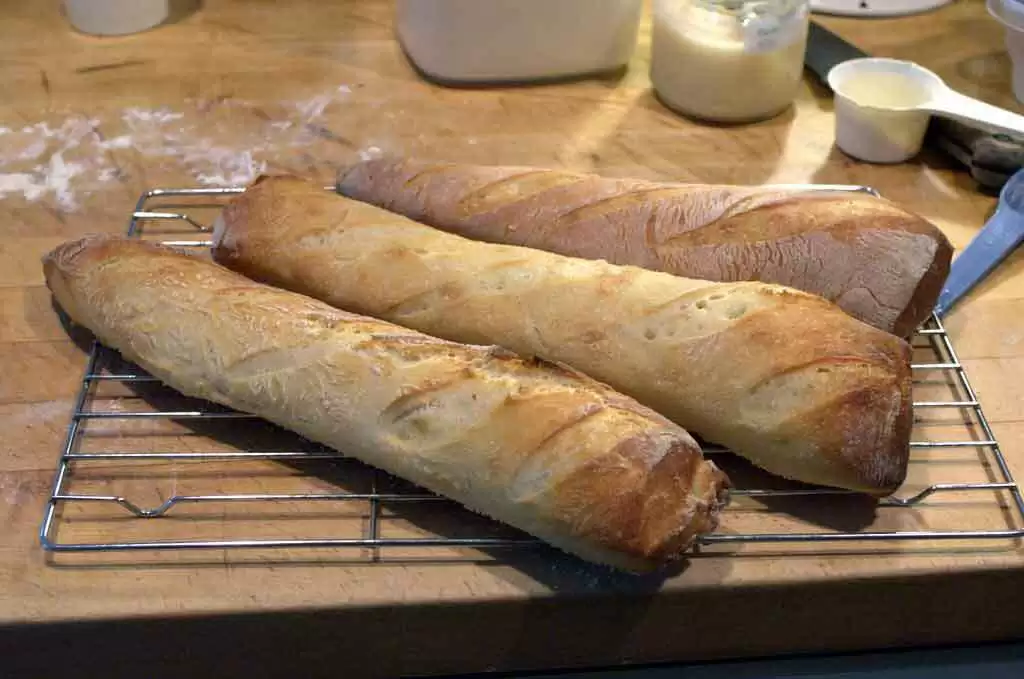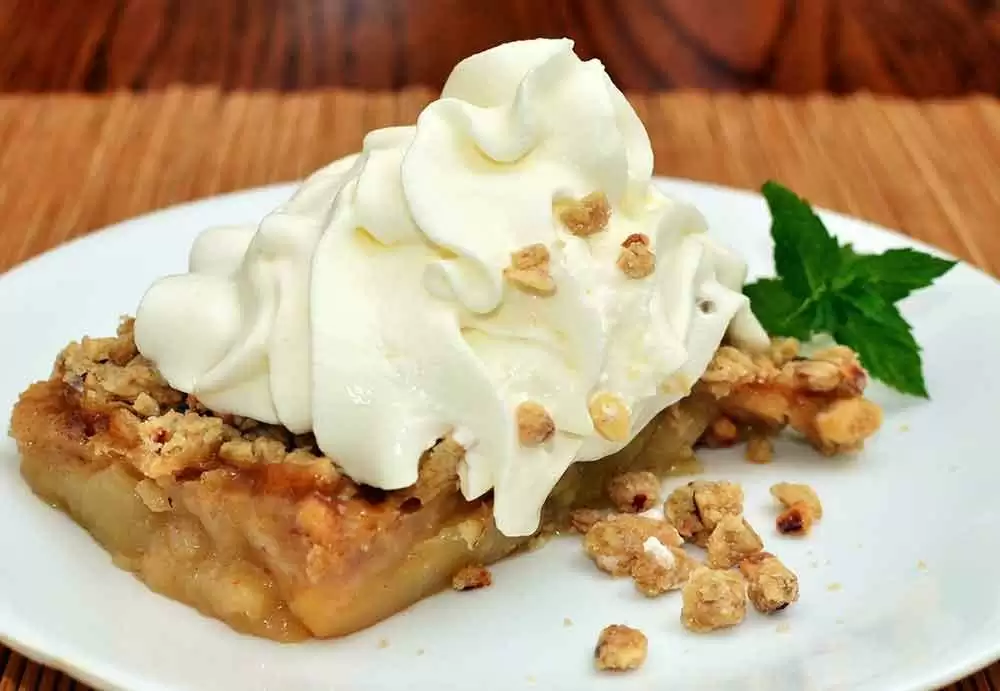
Celiac.com 08/22/2020 - You may have read about "No-Knead Bread" in Mark Bittman's column in the New York Times a couple of years ago or you may have seen more recent discussions in Cook's Illustrated magazine. Originally designed for traditional gluten breads, I discovered that this technique is extremely well-suited to gluten-free bread-baking.
Inspired by well-known baker Jim Lahey of Sullivan Street Bakery in Manhattan, the technique involves mixing a fairly wet dough, storing it in the refrigerator so it is ready to bake anytime in the next few days, and then baking as much (or as little) as you want, when you want. The reward is that you only mix once, yet enjoy fresh-baked bread throughout the week with minimal fuss. Instead of days-old bread or frozen gluten-free bread that has to be rejuvenated in the microwave oven, you enjoy it hot from the oven.
Celiac.com Sponsor (A12):
As it turns out, this technique is perfect for gluten-free bread. Just like our gluten-free dough, the dough is fairly wet and not kneaded. After some experimenting, I devised my own version and we made room for it in my latest cookbook, 1,000 Gluten-Free Recipes because my editors and I thought it was important to include this cutting-edge approach. We named it "Breakthrough Ready-to-Bake Bread."
The beauty of this approach is that it is so adaptable to a number of uses. If you live alone or cook for two, you could bake a single roll in a custard cup or a mini-loaf in a small loaf pan. For entertaining larger groups such as dinner parties or holiday gatherings, mix the dough early in the week and it's ready to bake two big French bread loaves by the weekend, saving you precious time on party day.
You may have some questions about this approach. If you're worried about the safety of dough that sits in the refrigerator for several days, don't be. I use flaxmeal instead of eggs for binding, and the vinegar provides an acidic environment. Most of us are accustomed to baking dough right after mixing it, so you may wonder what the baked bread looks like. The answer is that it looks remarkably like real bread; the air holes are a bit larger and somewhat uneven which is more appealing than the typical dense, cake-like texture of most gluten-free yeast breads.
The following recipe gives you exact instructions on how much dough to use for French breads, baguettes, and mini-loaves.
Breakthrough Ready-to-Bake Bread Recipe
Reprinted with permission from 1,000 Gluten-Free Recipes by Carol Fenster (Wiley, 2008)
Makes two French bread loaves (10 one-inch slices per loaf); three French baguettes (7 one-inch slices per loaf); or four 5x3-inch loaves (5 one-inch slices per loaf)
This ready-to-bake bread dough was inspired by New York baker Jim Lahey's "no-knead" technique. Mark Bittman wrote about Lahey's technique in the New York Times and it was also featured in Cook's Illustrated magazine. The dough in my gluten-free version keeps up to 5 days in your refrigerator. When you're to bake, remove enough dough for as many loaves as you wish. Shape the dough in a nonstick (gray, not black) pan, let it rise, and then bake it in a preheated oven.
Ingredients:
- 1 cup warm (110°F) milk (cow's milk works best)
- 1 tablespoon active dry yeast
- 2 tablespoons sugar
- 1 teaspoon golden flaxmeal (stir in ½ cup boiling water, then cool to room temperature)
- 2 cups potato starch
- 1 cup Carol's Sorghum Blend (see below)
- 1 ¼ teaspoons salt (1 ½ teaspoons if using canola oil)
- 1 teaspoon xanthan gum
- 1 teaspoon guar gum
- ¼ cup unsalted butter or buttery spread by Earth Balance
- 1 tablespoon cider vinegar
- 1 teaspoon sesame seeds, for sprinkling
Directions:
- Dissolve sugar and yeast in warm milk. Set aside 5 minutes.
- In bowl of heavy-duty stand mixer, beat all ingredients (except sesame seeds) on low speed just to blend ingredients. Increase speed to medium and beat 30 seconds, stirring down sides with spatula. Dough will be soft. Refrigerate, tightly covered, for up 5 days.
- When ready to bake, line French bread pan or French baguette pan with parchment paper, or generously grease up to four mini 5x3-inch pans.
-
Using #12 metal spring-action ice cream scoop or well-greased one-third cup measuring cup, place dough in chosen pan(s) and shape with wet spatula as follows:
4 level scoops bread dough per French bread loaf, shaped to 10-inch log(s)
2 heaping scoops bread dough per French baguette loaf, shaped to 10-inch log(s)
2 level scoops bread dough per 5x3-inch loaf, top of loaf smoothed flat
Sprinkle with sesame seeds. Place dough in warm place (75-80°F) to rise until level with top of pan. With sharp knife, make 3 diagonal slashes (⅛-inch deep) in loaf so steam can escape during baking. - Position rack in middle of oven. Set oven to 400ºF. Bake French bread 30 to 35 minutes; French baguette 25 to 30 minutes; or mini 5x3-inch loaf 20 to 25 minutes, or until nicely browned. Cover loaves with aluminum foil after 15 minutes of baking to prevent overbrowning.
- Remove bread from pans; cool 15 minutes on wire rack before slicing with electric knife or serrated knife. Serve slightly warm or at room temperature.
Carol's Fenster's Sorghum Flour Blend
- 1 ½ cups sorghum flour
- 1 ½ cups potato starch (not potato flour) or cornstarch
- 1 cup tapioca flour
Whisk together thoroughly; store in a tightly covered container in a dark, dry place or refrigerate or freeze. Bring to room temperature before measuring.


.webp.8ab94bca3c0a7593044fae4513cc679f.webp)







Recommended Comments
There are no comments to display.
Create an account or sign in to comment
You need to be a member in order to leave a comment
Create an account
Sign up for a new account in our community. It's easy!
Register a new accountSign in
Already have an account? Sign in here.
Sign In Now